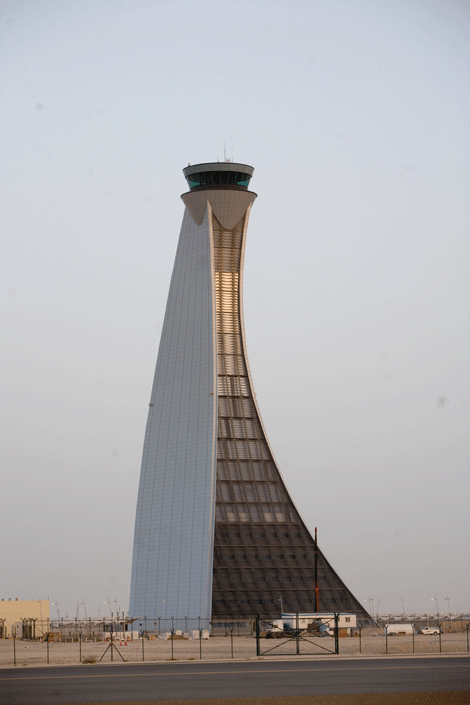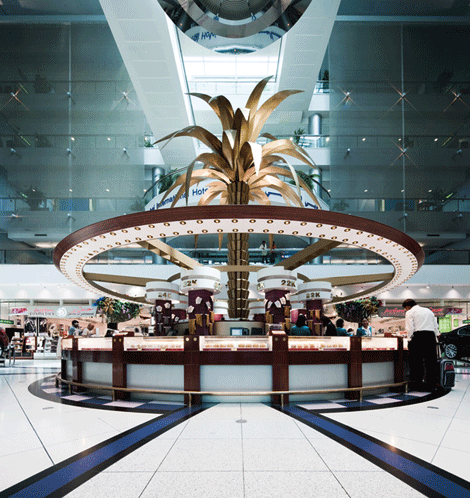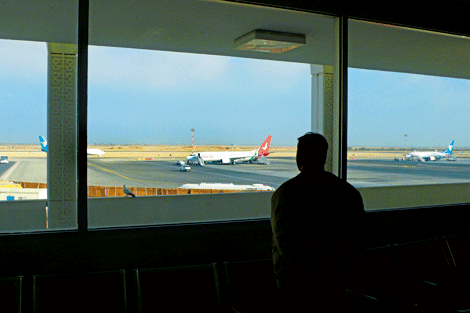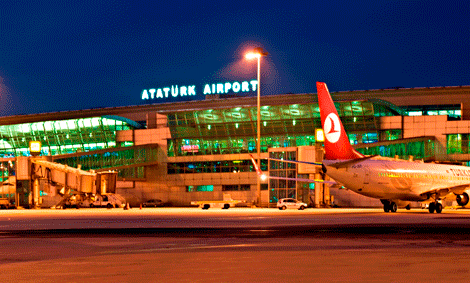In contrast to the struggles of the global aviation industry, the Middle East’s airports and airlines are thriving. Alisha Haridasani investigates the secrets to their success
The rise of Middle Eastern airlines has been a remarkable success story. In September last year, the Boston Consulting Group (BCG) coined the term “megacarriers” to describe the sustained growth of the major carriers in the region – Emirates, Etihad Airways and Qatar Airways – despite the financial crisis of 2008. In fact, Emirates has managed to triple its capacity and revenues over the past five years, emerging “from the global recession with a financial position that many legacy carriers would envy,” states the BCG Middle Eastern Megacarriers study.
The success of these airlines goes hand in hand with “great infrastructure, competitive rates and, as they say in real estate, location, location, location”, that all come together to make Middle East destinations effective international aviation hubs, explains Rich Talian, senior vice-president of strategy and development at Dubai Airports. Straddling three continents, its strategic location gives the region’s airports an advantage that attracts transit passengers en masse. For example, almost 55 per cent of passengers at Dubai International Airport connect onwards, coming in from one continent and continuing on to the next. By 2015, BCG predicts that passenger traffic to and from the Middle East will reach 140 million, with North America, Latin America, South and Northeast Asia being the most lucrative markets.
However, while these airports and their “home port” airlines face bright futures, their potential can only be met if the infrastructure can continue to accommodate the predicted ferocious growth. What are these airports doing to maintain their competitive edge?
Abu Dhabi
In 2009, the Abu Dhabi government launched its Abu Dhabi Economic Vision 2030 – a long-term project that aims to transform and diversify the nation’s economy, shifting it away from “reliance on the oil sector”, and moving towards more “knowledge-based” industries. That, of course, can only be facilitated with a state-of-the-art airport capable of handling the foreseeable demand for travel both in and out of the emirate.
Fortunately, expansion at Abu Dhabi International Airport began in 2006, long before this economic vision, and development has been ongoing ever since. The first project, completed in 2009, was the creation of Terminal 3 – Etihad’s dedicated terminal – that was designed to handle five million passengers per year. At that stage, the total capacity across all of the airport’s terminals amounted to 12 million passengers. In the same year, the airport completed the construction of the 4,100-metre-long North Runway to facilitate increased aircraft movement.
Two years later, in 2011, the airport completed a refurbishment project of Terminal 1, part of a plan to constantly ensure that all three terminals stay ahead of the tech curve. “The airport is renowned for its fast travel procedures and in recent years Abu Dhabi Airport Company (ADAC) has launched initiatives towards this end, such as city check-in facilities at ADNEC Expo, City Terminal and even some hotels, increased numbers of self check-in kiosks, free wifi and e-gates at immigration, along with luxurious and newly refurbished lounges,” explained Ahmad Al Haddabi, chief operating officer at ADAC.
It doesn’t end there. In the first quarter of this year, Abu Dhabi International Airport recorded a 21 per cent increase in passenger traffic compared to the same period in 2011. The year before that, airport traffic grew by 13.9 per cent overall, with a total of 12.4 million passengers passing through the airport – dangerously close to the airport’s total capacity of 12.5 million: clearly the need for more expansion is urgent.
Therefore, beyond these developments, ADAC is working on developing a 700,000 sqm Midfield Terminal Complex (MTC) that will eventually increase passenger capacity to 47 million passengers per year.
In the meantime, while the MTC progresses, the airport will continue to roll out smaller capacity enhancement projects to increase capacity to 17 million by 2017, such as additional Airbus A380-capable gates and stands, a new hotel linked to Terminal 3, and a new passenger arrival hall.
Doha
Currently, Doha International Airport, designed to handle 12 million passengers annually, is saturated with traffic reaching 18 million (including transit passengers) in 2011 – and it will only get more congested. “As the Qatar Airways route network expands to over 170 destinations within the next three years, the passenger flow will significantly increase,” stated a spokesperson for the airline. Therefore, all eyes are currently on the New Doha International Airport (NDIA), the new home of Qatar Airways that is expected to absorb the surge in traffic.
Lying almost 4km east of the current airport and measuring almost 2,200 hectares, more than half of which is built on reclaimed land from the Arabian Gulf, the new airport is expected to boost capacity to a total of 50 million passengers by 2015. Phase 1 of NDIA, which will be launched on December 12 this year, will accommodate at least 25 million passengers – a big step up from the capacity of the current airport. The airport will have two terminals, both measuring more than 4,000 metres, with one being A380 compatible.
The 600,000 sqm three-storey terminal will consist of 41 contact gates and 22 remote gates, six of which will cater specifically to A380 aircraft. Other facilities include nine baggage carousels, a 100-room transit hotel, 40,000 sqm of retail space and a dedicated terminal for VIP delegates – the Emiri Terminal. Beyond Phase 1, the airport expects to double its capacity, with the addition of 24 contact gates, bringing the total to 65, and increasing terminal space by an additional 300,000 sqm.
In addition to these developments, Doha International Airport has opened a brand-new Terminal – Terminal B – for all international flights while Qatar Airways’ international flights will continue to operate out of the existing terminal. The new terminal consists of 35 check-in counters including an “online check-in lounge” and a large immigration area with e-gates. Both terminals lie next to each other and share the same airside facilities, such as the duty-free area and lounges.

Dubai
It is predicted that Dubai International Airport, the biggest player in the region, will need to accommodate almost 98.5 million passengers by the end of the decade. Thankfully, the airport is doing plenty to ensure its facilities can shoulder the weight.
Firstly, Dubai Airports is gearing up for the launch of Concourse 3 in the first quarter of 2013, which will be the world’s first dedicated Airbus A380 facility and is expected to take passenger capacity up to 75 million from 60 million at present.
“But our expansion plans do not end there,” said Dubai Airports’ Rich Talian. Last year, Dubai International Airport unveiled the ambitious US$7.8 billion Strategic Plan 2020, which will boost capacity to 90 million by 2018 with a combination of airspace and airport expansions.
Work has already begun on this new project. Dubai Airports is engaging national and regional civil aviation authorities and air navigation service providers to ensure that routes are “decongested, bottlenecks are reduced and latent airspace capacity is unlocked,” explains Talian.
On the ground, the airport company will build a new taxiway and provide 60 per cent more aircraft stands to accommodate increased aircraft movements. Additionally, almost 675,000 sqm of floor space will be added to the terminals – “twice the footprint of London Heathrow Terminal 5,” says Talian – which will consist of an expansion to Terminal 2 and a fourth concourse that will be connected to Terminal 1.
However, long before Strategic Plan 2020, Dubai Airports had planned to operate a second airport at Dubai World Central (DWC) – Al Maktoum International Airport – that now quietly lies in the background. “The bottom line is that [Strategic Plan 2020] is the quickest, most efficient and cost-effective way to provide the capacity needed,” says Talian. But, “in the long term, towards the middle part of the next decade, DWC will be home to the Emirates hub”. When complete, it will be the world’s largest airport with a passenger capacity of 160 million. At present, only Phase 1 of Al Maktoum has been completed, which currently consists of 64 aircraft stands, an A380-compatible runway and one terminal that can handle up to five million passengers. Revenues from the investments at Dubai International Airport will be used to fund the further development of DWC.

Muscat
Last year, Muscat International Airport in Oman handled a total of 6.4 million passengers, which is just half of what Abu Dhabi clocks in a year and less than a quarter of what Dubai handles. Yet, despite being smaller than the other gems in the Middle East, Muscat airport is also in expansion mode due to a healthy growth in passenger traffic since 2009 (when it handled just 4.5 million passengers) that is predicted to continue in the coming years.
Muscat has plans for a new airport, the first phase of which is scheduled to be complete by 2014, according to the Oman Airports Management Company. The first phase will be designed to handle 12 million passengers per year, which will grow to 24 million, 36 million and 48 million in the future when, and if, demand exists. The new airport will consist of 86 check-in counters, 20 self check-in counters and an airside hotel.
Though Muscat is currently low on the radar, its size is perhaps its greatest strength as this means finding your way round the airport is easier and takes less time than navigating around Dubai or Abu Dhabi airports, and of course it’s not as crowded. Its ongoing expansion projects – that are being built in anticipation of, rather than in response to, demand – may boost the airport’s status within the region.

Istanbul
Though Turkey might be seen by some as belonging to Central Asia or even considered to be more European than Middle Eastern, it is still a part of the region and its greatest advantage is its role as “a bridge between East and West,” as is stated on the Ataturk Airport company’s website. In fact, in 2010 more than 13 per cent of passengers on Turkish Airlines, the country’s flagship carrier, were transit passengers. Perhaps the difficulty with categorising Turkey within a given continent is its biggest advantage – the European Union’s Emissions Trading System (EU ETS) does not apply to flights in and out of Turkey, making it a desirable transfer point.
The airport’s international terminal first began operation in 2000, with an extension added to the facility in 2004. At present, the airport is designed to handle 20 million passengers per year, with a terminal that consists of an 85-room airport hotel, 224 check-in counters, 11 baggage carousels and a 6,100 sqm duty-free shopping area.
However, passenger traffic now exceeds the airport’s handling threshold, having hit 32 million passengers in 2010. Meanwhile, Turkish Airlines’ network expansion shows no sign of slowing down, with plans to launch a total of 21 new flights this year alone, a strategy that will inevitably boost traffic even further.
The first part of the expansion projects at Ataturk Airport includes building more aircraft parking spaces. Initially the airport will add 50 more spaces; then, military land “which is adjacent to the airport is projected to be acquired in the airport’s premises,” says Alishan Cortuk, TAV Airports Marketing Coordinator, eventually allowing for 68 more parking spaces.
Furthermore, airspace will be “optimised for passenger traffic,” says Cortuk, meaning commercial flights will be given priority. General aviation flights – private jets – are now “severely restricted during the day and most are being directed to other airports”.

Passenger traffic: 2011 figures
The Middle Eastern Megacarriers 2011 study by the Boston Consulting Group predicts total passenger traffic to and from the Middle East will reach up to 140 million by 2015:
Dubai: 51 million
Istanbul: 37 million
Doha: 18 million
Abu Dhabi: 12 million
Muscat: 6 million
*47.8 million passengers will travel between the Middle East and Europe
*41.9 million passengers will travel between the Middle East and Southeast Asia
*23.3 million passengers will travel between the Middle East and Africa








